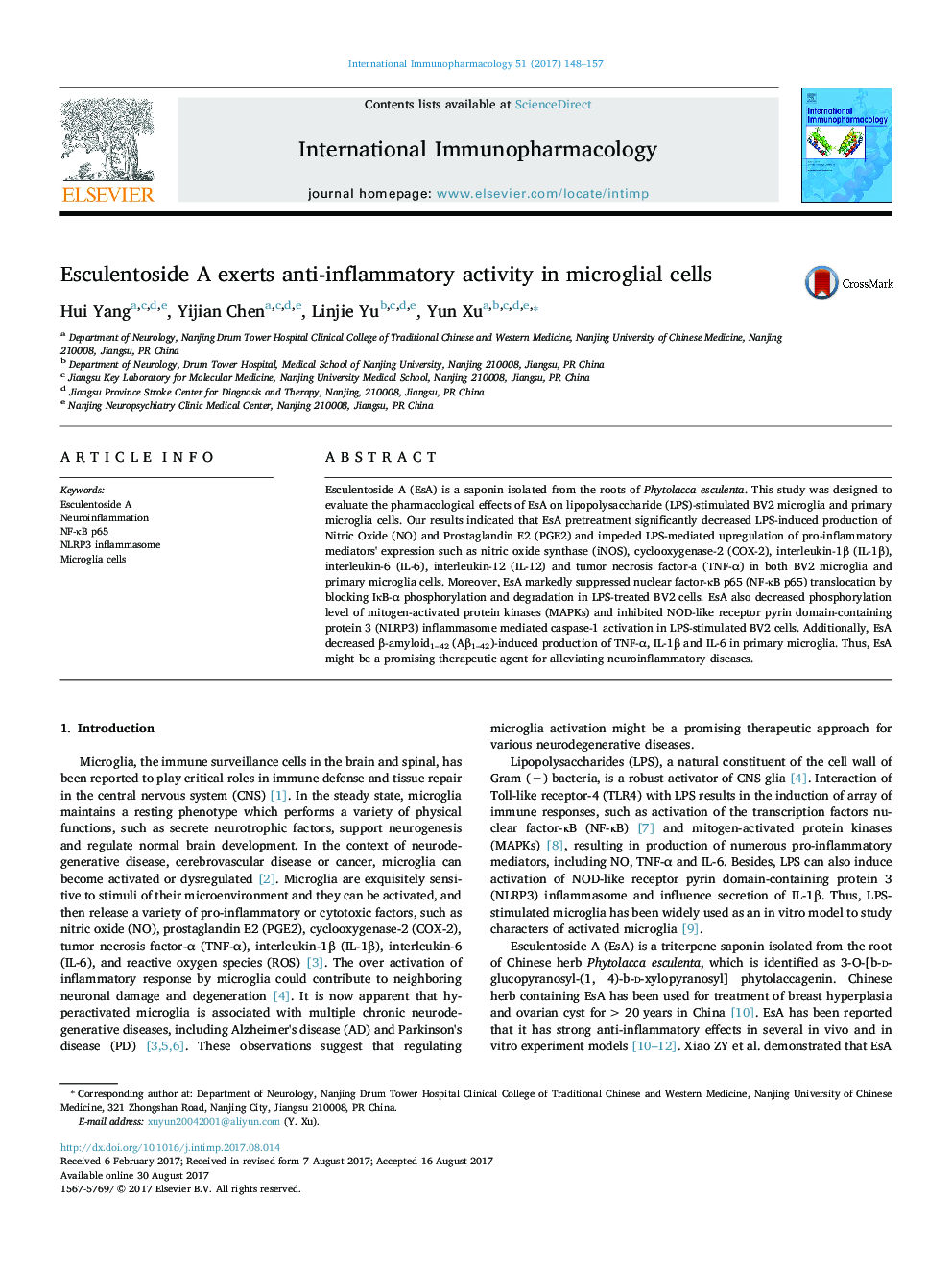| Article ID | Journal | Published Year | Pages | File Type |
|---|---|---|---|---|
| 5555227 | International Immunopharmacology | 2017 | 10 Pages |
â¢EsA attenuated LPS-induced inflammatory mediators' production in activated microglia.â¢The anti-inflammatory effects of EsA was associated with the inactivation of NF-κB, MAPKs and NLRP3 pathways.â¢EsA suppressed mRNA levels of cytokines in Aβ1-42-induced primary microglia cells.
Esculentoside A (EsA) is a saponin isolated from the roots of Phytolacca esculenta. This study was designed to evaluate the pharmacological effects of EsA on lipopolysaccharide (LPS)-stimulated BV2 microglia and primary microglia cells. Our results indicated that EsA pretreatment significantly decreased LPS-induced production of Nitric Oxide (NO) and Prostaglandin E2 (PGE2) and impeded LPS-mediated upregulation of pro-inflammatory mediators' expression such as nitric oxide synthase (iNOS), cyclooxygenase-2 (COX-2), interleukin-1β (IL-1β), interleukin-6 (IL-6), interleukin-12 (IL-12) and tumor necrosis factor-a (TNF-α) in both BV2 microglia and primary microglia cells. Moreover, EsA markedly suppressed nuclear factor-κB p65 (NF-κB p65) translocation by blocking IκB-α phosphorylation and degradation in LPS-treated BV2 cells. EsA also decreased phosphorylation level of mitogen-activated protein kinases (MAPKs) and inhibited NOD-like receptor pyrin domain-containing protein 3 (NLRP3) inflammasome mediated caspase-1 activation in LPS-stimulated BV2 cells. Additionally, EsA decreased β-amyloid1-42 (Aβ1-42)-induced production of TNF-α, IL-1β and IL-6 in primary microglia. Thus, EsA might be a promising therapeutic agent for alleviating neuroinflammatory diseases.
